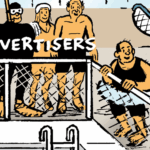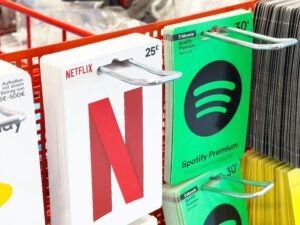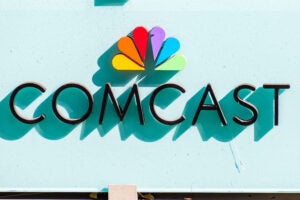 “Data-Driven Thinking” is written by members of the media community and contains fresh ideas on the digital revolution in media.
“Data-Driven Thinking” is written by members of the media community and contains fresh ideas on the digital revolution in media.
Today’s column is written by Phil Schraeder, chief operating officer and chief financial officer at GumGum.
Being viewable and being seen are not the same.
Yet today’s engagement measurement metrics do not take this key difference into account, to the severe detriment of brands that only discern value from their media investments when consumers actually see their ads.
It’s time to look beyond viewability and create a more sophisticated set of engagement metrics. Viewability is only good for potential. Actually seeing an ad, on the other hand, is a much more active process.
Nearly two years after comScore first called out the industry for wasting more than half of advertisers’ investment in display, an army of analytics vendors now stands ready with varying flavors of measurement and accountability.
The Media Rating Council (MRC) has established a viewable impression standard on which we can all agree, calling for desktop display ads to be considered viewable if 50% of their pixels are in view for at least one second.
But while 50% of an ad in view for one second is a fine technical standard, it hardly constitutes a brand metric. It’s not very realistic to say that someone who sees a little more than half the pixels of an ad for a little more than a second has really processed the image, much less the message behind it. Marketers need to focus on what takes an ad from viewable to being seen.
Uncertain Future
Unfortunately, the sheer number of measurement vendors – and the wide discrepancies between them – has left the industry still grappling with how to transact on viewable impressions. This led the IAB to recently publish a “State of Viewability Transaction” report [PDF], which said an acceptable viewable impression threshold is 70% of ad pixels in view. The IAB also said that if a campaign doesn’t achieve this threshold for measured impressions, publishers should “make good with additional viewable impressions until the threshold is met,” placing pressure on publishers to ensure a certain degree of ad performance.
Whether directly sold or delivered programmatically, advertisers deserve to confidently invest in viewable impressions. Transacting on viewable impressions will be figured out between buyers and sellers, their respective measurement vendors and the industry’s trade bodies. In the meantime, we should focus on the effectiveness of those impressions, not the least of which is making sure the ads are actually seen, not just technically viewable.
Better Metrics
When everything becomes viewable, other metrics that go beyond the concept of viewablity are needed.
These kinds of metrics include Millward Brown’s ability to measure post-impression consumer search and site visitation behavior, which can track whether a customer is searching or researching a product related to a specific ad and measure the ad’s influence. There is also Nielsen Online Brand Effect’s measurement of brand lift, as studied through exposed and unexposed panel methods to determine if ads actually led to conversions.
Other useful tools are engagement metrics from MOAT, such as hover rates and time in view, which can offer valuable insights into how customers specifically interact with content. This can tell marketers how customers are browsing and how different kinds of ads can influence that browsing experience.
With the information that these metrics provide, brands can measure the lasting impact of their ad campaigns, in terms of brand awareness and customer behavior. This tells them which ads are having an effect on customers in ways that are beneficial to the brand, not just the advertiser or publisher.
These are the metrics brands should care about most. Everything on a page is viewable, but being viewable is not the same as being seen. Anything and everything in front of a person is viewable, but it’s the elements that are engaging, interesting and eye-catching that are actually seen.
The majority of an ad’s value comes from its ability to draw the viewer in. In an age where consumers are bombarded with more content than they can process, content that is seen by consumers captures and holds users’ attention long enough to process the message is what truly defines success.
Follow GumGum (@GumGum) and AdExchanger (@adexchanger) on Twitter.













